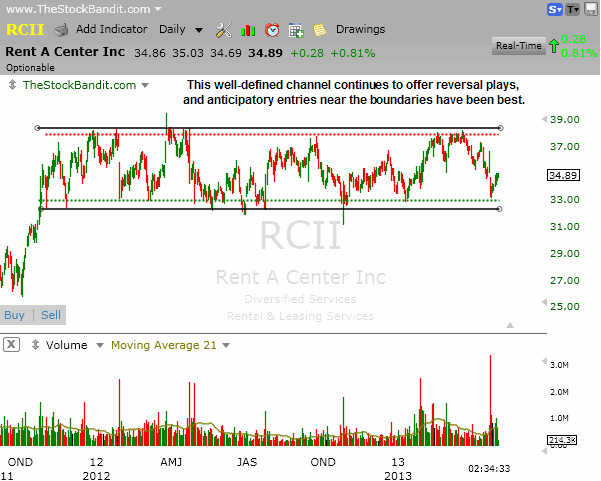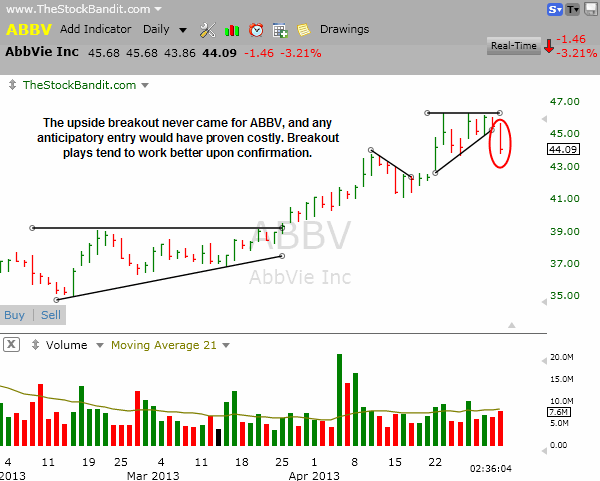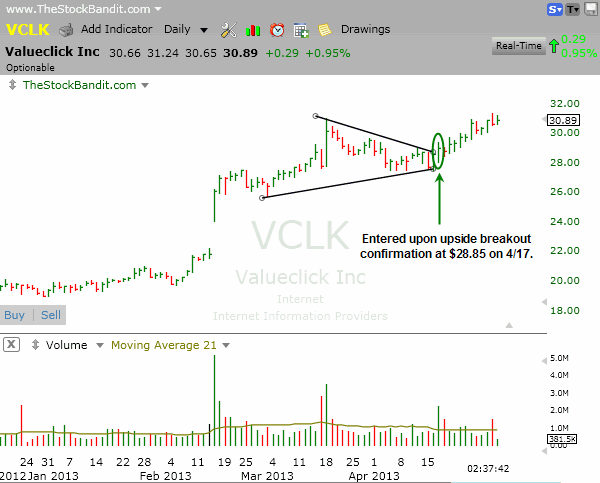There are many ways to classify traders, but one such way to describe styles would be that of an anticipatory approach vs. waiting for confirmation.
Not every trader will fall into a single category, and in fact you’ll find that experienced traders will at times do some of both. There’s nothing wrong with that, and shifting with the tide of the market is always wise and beneficial.
However, I wanted to discuss some of the pros and cons of these two approaches and then share with you some situations where I’ll employ them (because at times I’ll use them both).
Anticipatory Trading
The anticipatory trader is one who takes a position and then waits for a move to begin. The trader who anticipates is often thought of as a contrarian. The contrarian typically does have an anticipatory style by building a position against a key level and then looking for a reversal to begin. However, some breakout traders anticipate. Rather than waiting for the breakout, they might establish their position while the stock itself remains in a trading range or base.
Contrarian
The contrarian anticipates by establishing positions usually against a key level or into a pullback (whether a dip within an uptrend or a bounce within a downtrend). The advantage is that they can enter with better pricing than they would get by waiting for the reversal to begin. The disadvantage is that they might be early and therefore wrong (at least temporarily).
An example is RCII, which has continued to respect this nearly $6 wide trading range since the fall of 2011. Anticipating reversals away from support (any entry south of $33 has paid off well with limited risk) or away from resistance (any entry north of $37.75 has paid off well with limited risk) continues to work in this stock. This is a contrarian trader’s dream stock.

Breakout
The anticipatory breakout trader is expecting continuation of the existing trend, but typically is entering a position in expectation of that trend resuming before it has actually happened. It might be a high channel pattern after a significant rally, which is a healthy base, and this trader expects it to be resumed to the upside. Instead of waiting for a new high, they get long within the channel in hopes of seeing price push through resistance sooner than later. As an advantage, it offers them better entry prices. The disadvantage is that price might continue to stagnate (thus exposing them to risk without reward) or even fail the pattern, in which case they end up with a loss.
Here’s a look at ABBV, which had been on my radar in recent days with a bullish pattern in development. Resistance had been established, and rising support was beginning to create a tightening base. I’ve been looking to possibly get long if it could make a new high in the $46.40 area. On Thursday, price broke down from the base. Anticipating a move here would have resulted in a quick loss by not waiting for confirmation of the pattern.

Confirmation Trading
The confirmation trader waits for price to clear a key level or a reversal to begin before establishing a position. Waiting for this confirmation brings with it inferior prices compared to an anticipatory approach, but can also mean higher probabilities associated with the trades due to fewer pattern failures. This approach also tends to result in fewer trades since it’s based on price exiting a base rather than simply identifying a base as a means of entry.
An example of a trade I’m currently in is VCLK, which I entered on 4/17 after price cleared the descending trend line at $28.85. This gave confirmation that price was back on the move to resume the longer-term uptrend. it also meant I paid a higher price for entry, but since then price has steadily risen and currently is up more than 7% since my entry. As I’ve shared with members, earnings are due out next week so I’ve been tightening my stop aggressively behind this trade due to it running out of time. Either way, this has been a nice steady move to participate in and it was worth paying up a bit on the confirmatory move through the descending trend line.

Anticipatory trading is tricky, and you need to know when to make anticipatory trades if that’s your primary approach. Whichever route you go, it really boils down to personal preference since both approaches have benefits and drawbacks. The bulk of the trades I’m putting on and sharing with members here are confirmation plays, simply because that’s my style.
One other thing I should mention that I’m asked about frequently is whether I prefer to wait for a close above a level on breakout plays to further validate or confirm the move, or wait on volume expansion to confirm the move. The answer to that is no. Here again, it’s a tradeoff as it can result in more headfakes, but it also means I don’t miss out on any trades.
Waiting for a close beyond the breakout zone with intentions of entering the next day can in some cases leave you behind if price thrusts through the level decisively. It can leave you chasing a move with and entry farther away from an appropriate stop (greater risk), which is why I prefer to take trades as they push through the levels (tighter risk). It’s a matter of personal preference, but whichever route you go the key is to be consistent.
If this is over your head and you need the 101 on technical analysis, don’t worry. That is the kind of thing we teach in our Basic Course, and you need to be in that course if you need more help understanding the charts or the fundamentals of trading.
Trade Like a Bandit!
Jeff White
Take a trial to our Stock Pick Service to get our trades.










